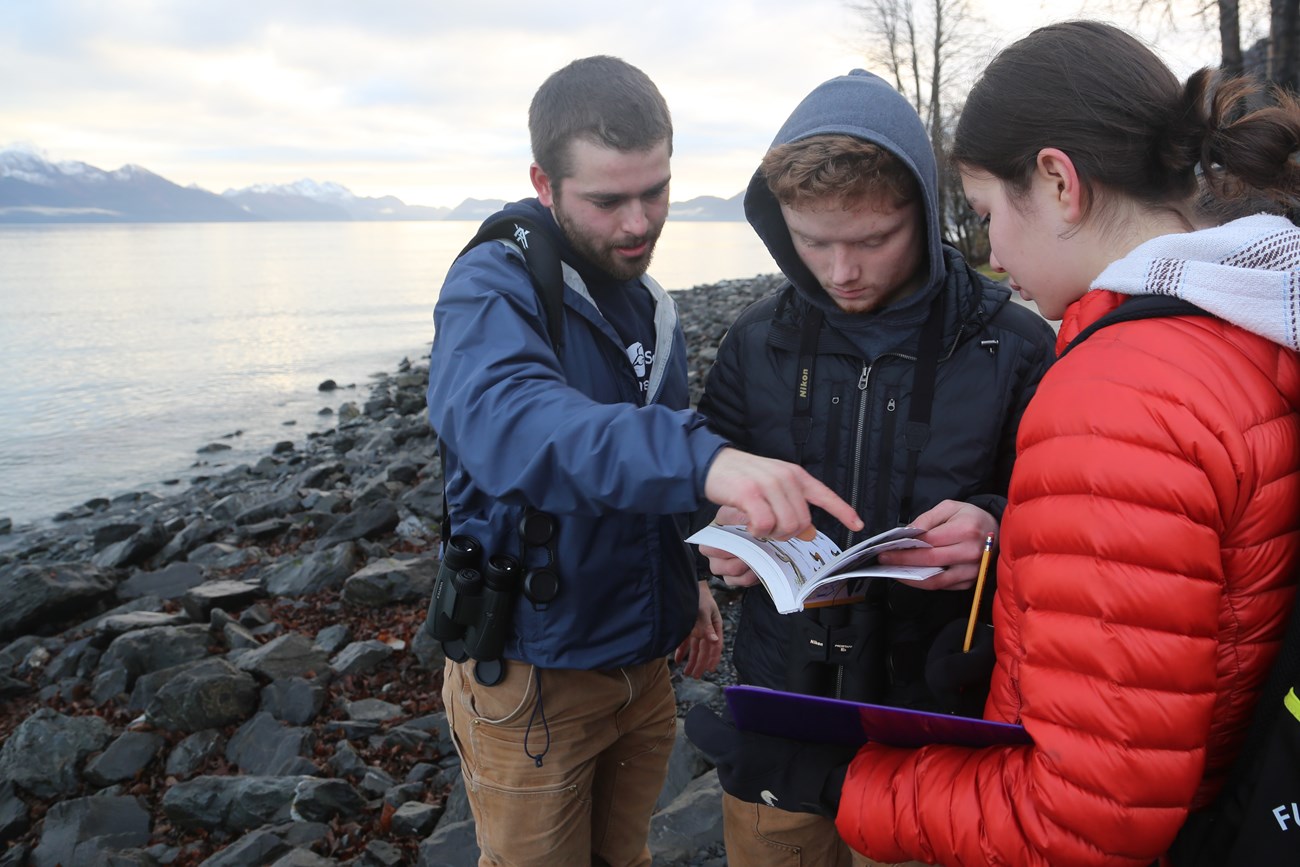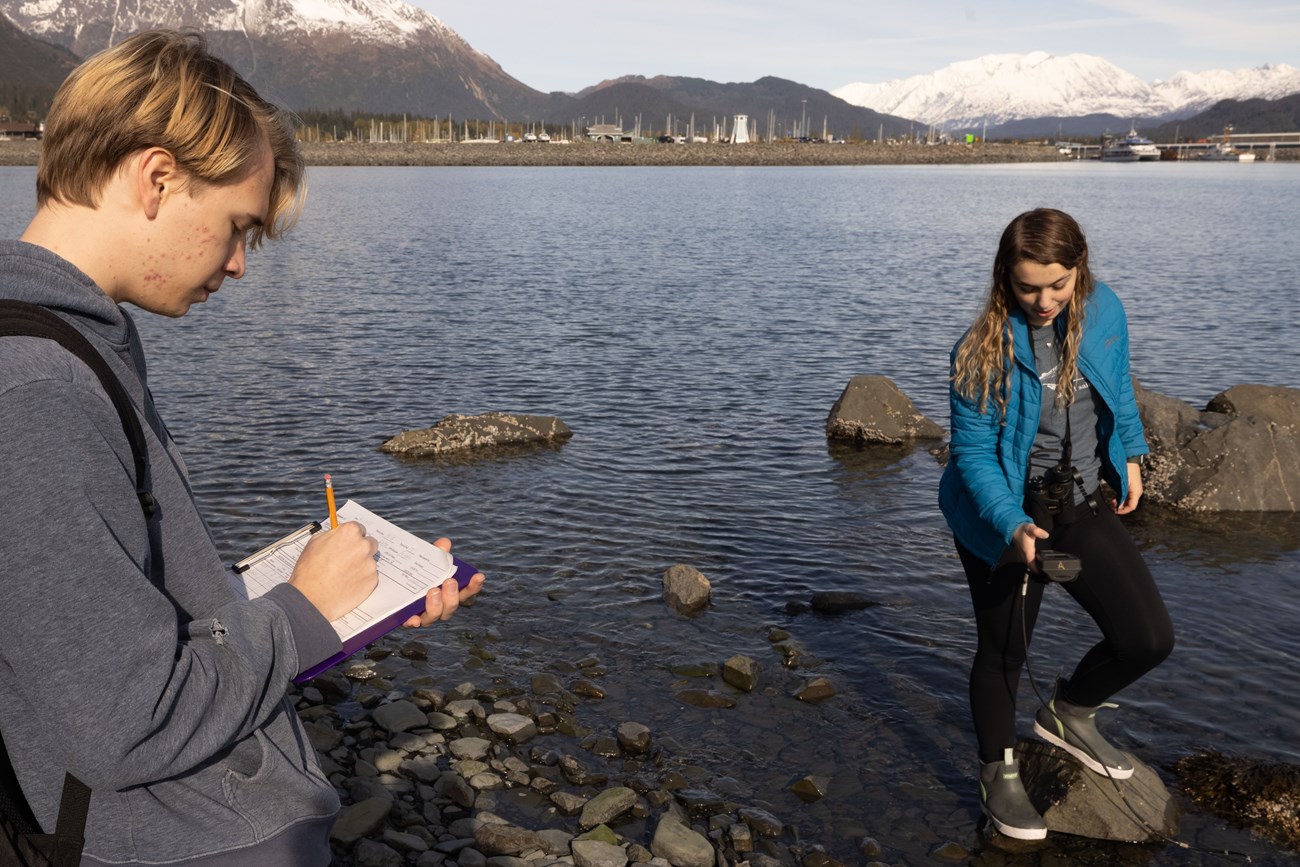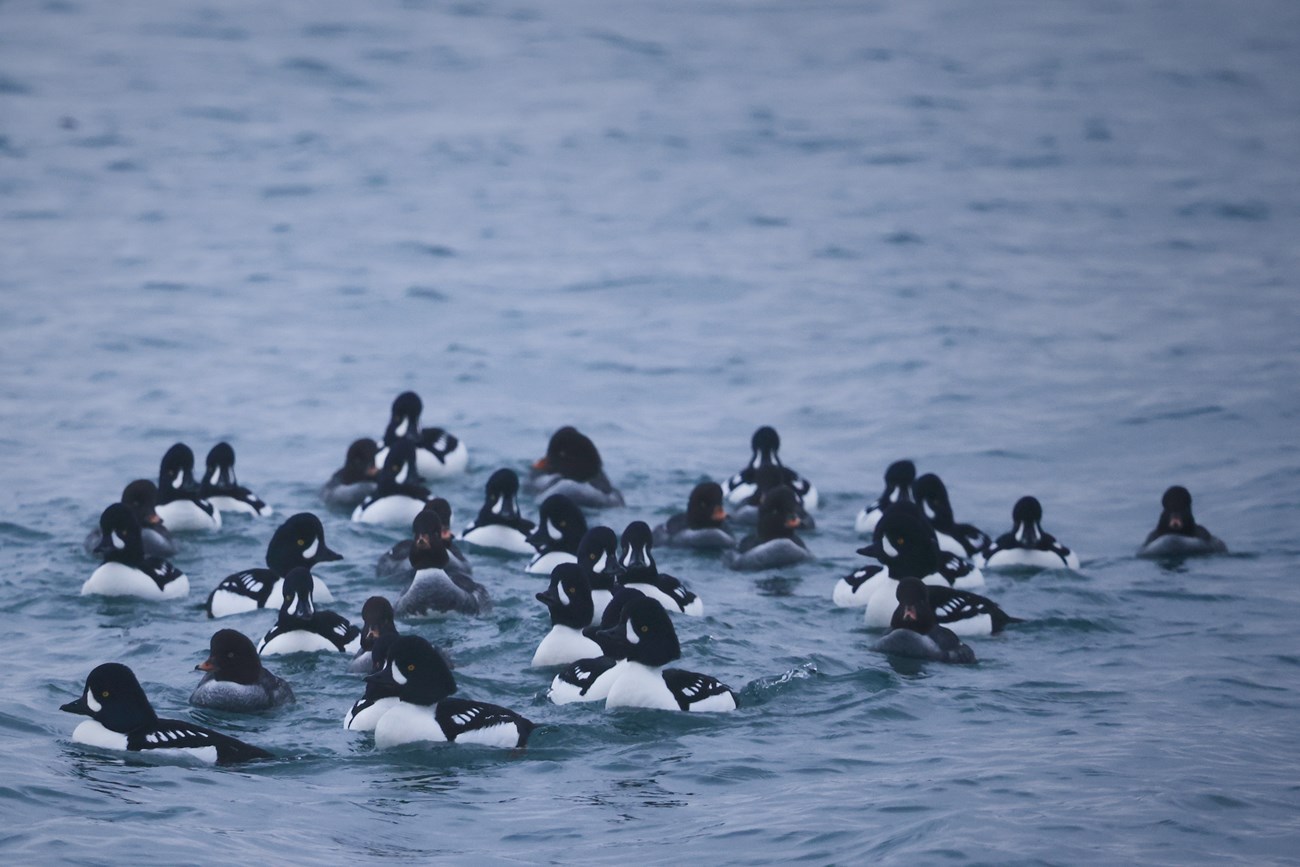Last updated: December 29, 2021
Article
SeeBird: Fostering the next generation of stewards
A partnership between the Alaska SeaLife Center and Seward High School is helping to raise Alaska’s next generation of stewards
By Alix Pfennigwerth

“Wait, look, another one!” a student announces excitedly. Three pairs of binoculars raise in unison and point towards the sea. Peering through the binoculars, more students begin to call out observations. “It’s mostly black… white on the wing!” “Not too big!” “Its beak is long, kinda’ thin!”
Another student pulls out their field guide, and soon all of them are huddled around the book, flipping through the pages, narrowing in on an identification. After some lively discussion, they eventually land on the correct identification: what they’ve just observed is a pigeon guillemot.
Three weeks earlier, none of these students would have ever heard of a pigeon guillemot, or any of the other seabirds they’ve been identifying and monitoring. But today, they’re eager to learn the new species. Satisfied, they carefully record their observation, then move towards their next transect.
The students are monitoring seabirds: birds that feed at and below the ocean’s surface on krill, small fish, and other prey, typically nest in coastal colonies, and are known for flying extraordinary distances in annual migrations. Since seabirds rely heavily on coastal environments for habitat and food, they’re often quite sensitive to changes in that environment: an oil spill, increased fishing or vessel traffic, or climate change. During recent years, unprecedented seabird die-offs in Alaska have been linked to changes in marine conditions. Understanding the causes and scope of these die‐offs has become a critical scientific and management question in Alaska’s coastal national parks.

The origins of SeeBird
Since 2011, scientists at the Alaska SeaLife Center have been collecting monthly seabird data in Seward’s Resurrection Bay. It’s the only year-round marine bird monitoring effort in Alaska, but they wanted to take it a step further still. That's where Seward High School’s Marine Biology class comes in.
In 2018, a group of Alaska SeaLife Center scientists led by Dr. Tuula Hollmen partnered with Seward High School to bring students into the field. They called the program SeeBird, and their goal was two-fold: to engage students in real-world science, and to collect meaningful seabird data to support conservation in and around Kenai Fjords National Park.
On their first SeeBird field trip, the students gathered with Hollmen, local scientists, and community volunteers along the Seward waterfront. The students received training on bird identification and project protocols. Then, with their mentors, the students collected data on seabird species and abundance, weather, and water quality. For the rest of the year, they returned to the waterfront each week—come rain, snow, sleet, or shine—to collect more data.
At the end of the school year, the students worked with their mentors to analyze and interpret their data. Their efforts culminated in a student-led presentation at a local brown bag event.

Seeing the value in science
The students saw the value and application of their science when, on December 9, 2018, a fishing vessel sank in Seward’s harbor. The U.S. Coast Guard responded to the incident and, anticipating the need to clean up to 2,500 gallons of petroleum from the water, those involved in the response requested ecological reference data for the area. The students’ fine-scale seabird monitoring data fit the bill.
After a successful pilot year, Hollmen and the SeeBird team continued the program in 2019, 2020, and 2021. Hollmen is currently analyzing the students’ weekly monitoring data alongside monthly and annual data collected by the Alaska SeaLife Center and the NPS Southwest Alaska Inventory & Monitoring Network. In addition to a scientific paper comparing these data, she plans on writing a paper on the benefits and lessons learned from the SeeBird project. She hopes SeeBird can be a template for other communities seeking to engage students in real-world science.
SeeBird is making valuable contributions to science and conservation—providing the finest-scale, year-round seabird monitoring data available in Alaska, and even informing a spill response. Yet Hollmen's work goes beyond just the data. SeeBird is engaging students in a formative experience that they’ll carry with them into the future.
As Pfeiffenberger puts it, the students participating in SeeBird are learning how to be Alaska's "next generation of stewards."
SeeBird is funded in part by an Ocean Alaska Science and Learning Center research and education grant. Tuula Hollmen (Alaska SeaLife Center, University of Alaska Fairbanks) is the project’s principal investigator and Jim Pfeiffenberger (Ocean Alaska Science Learning Center) is the education/outreach lead. Sadie Ulman (Alaska SeaLife Center), Jenna Schlener (Alaska SeaLife Center) and Timothy Mullet (Kenai Fjords National Park) are co-investigators. The program is partnering with Seward High School.
Alix Pfennigwerth is a biologist and science communicator with the National Park Service.
